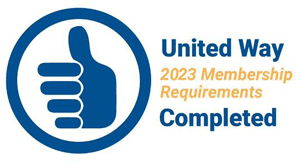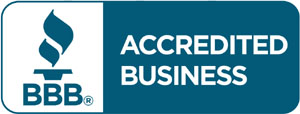The United Way ALICE® Project
A growing number of individuals and families work, but cannot afford basic necessities such as housing, food, child care, health care and transportation. These families struggle - earning too little to make ends meet, but often times too much to qualify for assistance. These people are all around us, yet invisible to most of us.
United Way Services of Northern Columbiana County joined other United Ways across Ohio and Ohio United Way to produce the ALICE Report in 2017. ALICE is an acronym for Asset Limited, Income Constrained, Employed. ALICE identifies those whose household income is above the federal poverty rate (FPL), but less than the basic cost of living. The ALICE Project has grown from a pilot in Morris County, New Jersey in 2009 to the national level with 450 United Ways participating. ALICE households are in every county - urban, suburban, and rural - and include women and men, young and old, of all races and ethnicities. The ALICE Report was updated in 2020.
We all know and interact with ALICE every day. ALICE provides needed services that are vital to our local economy. You depend on ALICE, who may be the home health aide for your ageing parent, a day care worker for your child, your auto mechanic, your hairdresser or barber, your server at a local restaurant, the cashier at the grocery store, or the person who cuts your lawn and shovels your driveway in winter. ALICE may be your neighbour or friend, a relative, or even you.
In Columbiana County, the FPL rate is 15% of all households. An additional 28% qualify as ALICE. In other words, 43% of Columbiana County households are struggling to afford a basic budget that includes housing, child care, food, transportation, and health care.
Basic household expenses in Columbiana County cost more than most jobs can support. The annual household survival budget for a family of four (two adults, one infant, one preschooler) is $55,524 - significantly more than double the U.S. family poverty level of $25,100.
Fifty-nine percent of all jobs in Ohio pay less than $20 per hour, with three-quarters of those paying between $10 and $15 per hour ($15 per hour full time = $30,000 per year). These jobs - especially service jobs that pay wages below $20 per hour and require a high school education or less - will grow far faster than higher-wage jobs over the next decade.
The 2020 ALICE Report lookis at seniors separately. Basic household expenses for seniors are higher than for adults, primarily because of health care costs. The basic householf survival budget for seniors is $24,396, compared to $21,828 for a single adult.
When ALICE households cannot make ends meet, they are forced to make difficult choices such as forgoing health care, accredited child care, healthy food, or car insurance. These "savings" threaten their health, safety, and future - and they reduce productivity and raise insurance premiums and taxes for everyone. The costs are high for both ALICE families and the wider community.
The ALICE Project provides a framework, language, and tools to measure and understand the struggles of the growing number of households in our communities that do not earn enough to afford basic necessities. This research initiative presents data that can stimulate meaningful discussion, attract new partners, and ultimately inform strategies that effect positive change.
Together, United Ways, government agencies, non-profits, and corporations have the opportunity to evaluate current initiatives and discover innovative approaches that give ALICE a voice, and create changes that improve life for ALICE and the wider community. United Way fights for the health, education and financial stability of every person in every community.
The ALICE® Report provides the following measures:
- Household Survival Budget calculates the actual costs of basic necessities. These include housing, child care, food, transportation and health care.
- ALICE Threshold is the average level of income that a household needs in order to afford the basics, as defined by the Household Survival Budget for each county.
- The Household Stability Budget demonstrates a budget greater than the Household Survival Budget and includes modest savings and other categories.
- ALICE Income Assessment is the calculation of all sources of income, resources and assistance for ALICE and poverty-level households in Ohio. This assessment reveals a shortfall and a gap between what these households bring in and what is needed for them to reach the ALICE Threshold.
- Economic Viability Dashboard uses three indexes to evaluate the economic conditions that matter most to ALICE households - housing affordability, job opportunity and community support - in each county.
The Columbiana County Report provides data specific to Columbiana County.



